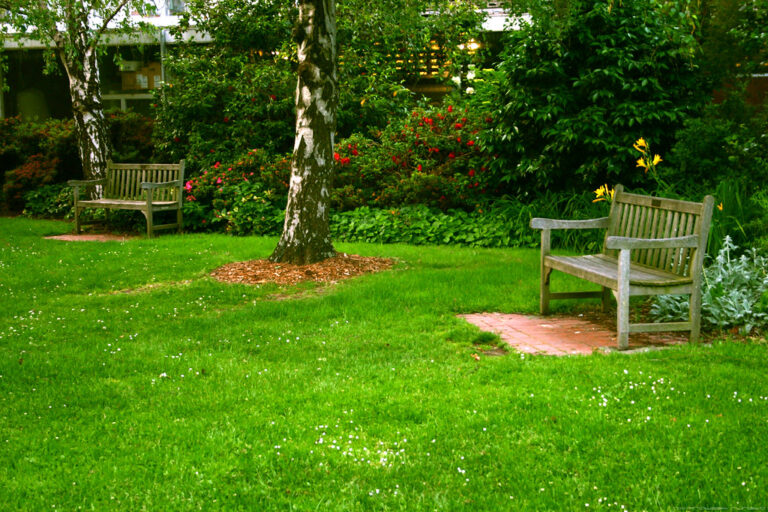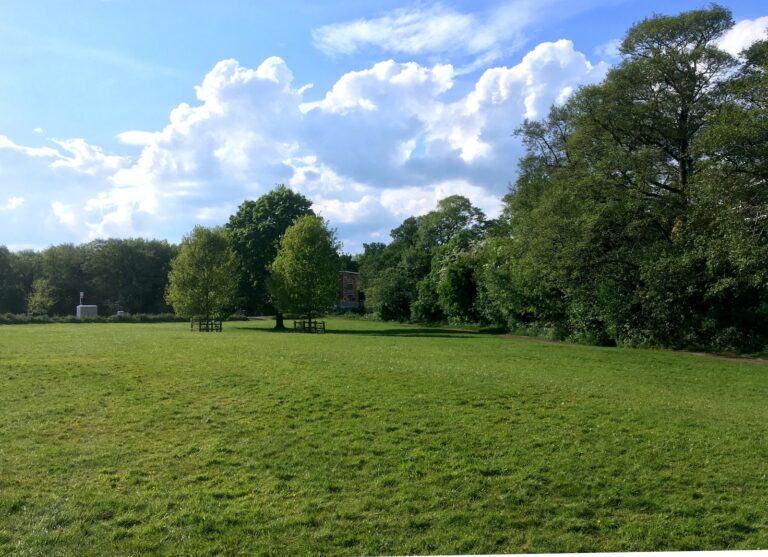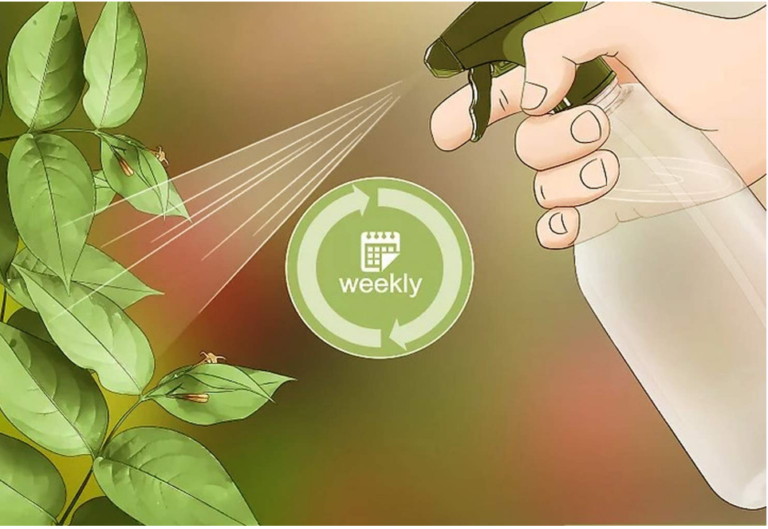How to Incorporate Hardscaping and Lighting into Your Lawn Design

Transforming your lawn into a stunning outdoor oasis involves more than just planting beautiful flowers and lush greenery. It’s time to take your landscaping game up a notch by incorporating hardscaping and lighting elements that are sure to turn heads and wow anyone who visits your home.
From creating cozy seating areas with fire pits, adding water features, or installing subtle ambient lights for those perfect summer evenings, there are endless possibilities when it comes to designing the ultimate outdoor paradise. Luckily, we’ve got you covered with this comprehensive guide on how to incorporate hardscaping and lighting into your lawn design like a pro!
Introduction to Hardscaping
Hardscaping is the use of hard materials such as stone, concrete, or brick to create a designated space in your yard. This can be used to create a patio, walkway, or other feature. Lighting is also an important part of hardscaping. It can be used to highlight certain features or add safety and security to your home.
Benefits of Incorporating Hardscaping and Lighting into Your Lawn Design
Hardscaping and lighting are two important elements of any lawn design. When used together, they can add both aesthetic and functional value to your property.
Here are some of the benefits of incorporating hardscaping and lighting into your lawn design:
Aesthetics: Hardscaping and lighting can enhance the overall appearance of your lawn. They can add interest and depth, and create a pleasing visual landscape.
Functionality: Hardscaping and lighting can also improve the function of your lawn. Lighting can provide safety and security, while hardscaping can define walkways, patios, and other gathering spaces.
Value: Incorporating hardscaping and lighting into your lawn design can also increase the value of your property. A well-designed lawn with these features will be more attractive to potential buyers should you ever decide to sell.
Types of Hardscape Elements

Are you thinking about adding some hardscape elements to your lawn design? Hardscaping can add interest and functionality to your yard, and can be used to create different areas for entertaining, relaxing, or gardening.
There are many different types of hardscape elements that you can choose from, and the best way to incorporate them into your lawn design will depend on the overall look you are going for.
Here are a few of the most popular types of hardscape elements that you may want to consider:
–Pavers: Pavers are a great option for creating walkways, patios, or other hard surface areas in your yard. They come in a variety of colors and materials, so you can find an option that fits with the rest of your landscaping.
–Boulder: Boulder can be used to create natural-looking features in your landscape. They can be placed in garden beds or along walkways to add interest.
–Retaining walls: Retaining walls can be used to create raised garden beds or to level off an uneven yard. They are available in a variety of materials, including stone, brick, and wood.
–Fire pits: Fire pits make a great addition to any outdoor space. They provide warmth and light, and can be used for cooking or simply enjoying the outdoors.
Planning Your Design

When it comes to lawn design, one of the most important aspects is incorporating hardscaping and lighting. Hardscaping refers to the use of hardscape features such as pathways, patios, and retaining walls. Lighting is also critical for lawn design, as it can help to create a certain ambiance and highlight specific features.
When planning your design, consider how you want to use your lawn space. Do you envision using it for entertaining guests? Or do you simply want a space for your family to enjoy? Once you have a general idea of how you want to use your lawn, you can begin planning your hardscape and lighting features.
Pathways are a common hardscape feature that can add functional appeal to your lawn. They can help direct foot traffic and create a more defined space. If you entertain often, consider adding a patio or deck area for guests to gather. Retaining walls can also be used to create raised garden beds or define boundaries within your lawn.
Lighting is key for both function and aesthetic appeal. Pathway lights can help guide guests through your lawn at night, while accent lights can highlight specific features such as sculptures or water fountains. Strategic lighting can also create a certain mood or atmosphere within your lawn – whether it’s romantic and intimate or festive and cheerful.
When incorporating hardscaping and lighting into your lawn design, there are endless possibilities. With careful planning, you can create a space that perfectly meets your needs and enhances the natural beauty of your landscape.
Choosing Materials and Lighting Features
When it comes to hardscaping and lighting, there are a few things to keep in mind in order to create a cohesive and stylish design. For materials, consider using stone, concrete, or brick for a classic look. If you want something more modern, steel or glass can be used. As for lighting features, think about incorporating solar lights, LED lights, or landscape lights into your design.
You’ll also want to decide on the placement of these features. Do you want them to line the walkway leading up to your front door? Or perhaps you want them accentuate your garden beds. Whichever route you choose, make sure that the materials and lighting work together harmoniously to create a beautiful lawn design.
Installation Process
Installing hardscaping and lighting into your lawn design is a great way to add curb appeal and value to your home. The installation process is not difficult, but there are a few things to keep in mind to ensure a successful project.
first, it is important to choose the right hardscape materials. There are many different types of stone, pavers, and other materials to choose from. It is important to select materials that are durable and will last for many years. Depending on the climate in your area, you may also want to choose materials that are resistant to freezing and thawing cycles.
Next, you will need to determine the layout of your hardscape project. This includes deciding where pathways, patios, and other features will be located. Once you have a plan, it is time to start excavating the area for your project. Be sure to call 811 before you start digging! This will help ensure that you do not damage any underground utilities.
After the excavation is complete, it is time to install the base material for your hardscape. This may include gravel or sand depending on the type of material you are using. The base material should be level and compacted before you start laying down your stone or pavers.
Once the base is installed, you can begin laying down your chosen material. It is important to take into account the pattern or design you want as well as the size of each piece when laying down your hard scape.
The last step is to install the lighting for your project. There are many different types of lighting available for outdoor projects and you will want to select one that fits both the aesthetic and your budget. Once the lights are installed, it is time to enjoy your new hardscape!
Maintaining and Upkeeping Your Hardscape and Lighting Design
Hardscaping and lighting are two important aspects of any lawn design.
Here are some tips on how to maintain and upkeep your hardscape and lighting design:
1] Regularly clean your hardscape. sweep or hose down your paving stones, brickwork, decks, etc. to keep them looking their best.
2] Inspect your hardscape for any damage or wear and tear. If you notice any cracks, chips, or other damage, repair it as soon as possible to avoid further damage.
3] Keep your lighting fixtures clean and free of debris. Regularly check for burnt-out bulbs and replace them as needed.
4] Inspect your lighting fixtures for any damage or wear and tear. If you notice any cracks, chips, or other damage, repair it as soon as possible to avoid further damage.
5] Check the wiring of your lighting fixtures on a regular basis to make sure there are no loose connections or exposed wires that could pose a safety hazard.
Cost Estimations
Installing hardscaping and lighting into your lawn design can be a great way to improve your home’s curb appeal. However, before you begin any projects, it’s important to create a budget and get cost estimations from reputable contractors.
Here are a few tips to help you get started:
1] Know what you want: Before contacting any contractors, it’s important that you have a clear idea of what kind of hardscaping and lighting features you’d like to incorporate into your lawn design. This will make it easier for contractors to give you accurate cost estimates.
2] Get multiple estimates: Once you know what you want, reach out to several different contractors for cost estimates. Make sure to get quotes from both local and online companies in order to compare prices.
3] Choose quality over quantity: When it comes to hardscaping and lighting, it’s important to choose quality over quantity. This means that it’s better to spend more money on fewer high-quality items than it is to purchase a large number of cheap items. By doing this, you’ll ensure that your new features will last for many years to come.
Conclusion
Incorporating hardscaping and lighting into your lawn design can be a great way to add an extra layer of beauty to your outdoor space. It’s important to take the time to plan out each step carefully and collaborate with professionals who can expertly install these features for you. Ultimately, it’s all about finding the right balance between form and function that keeps both nature and your home looking beautiful year-round.

James is a passionate writer and gardener with years of experience in home gardening. He is the author of several articles and blog posts on HomeGardenBlog.com, a platform where he shares his expertise and love for plants and gardening with the world.







